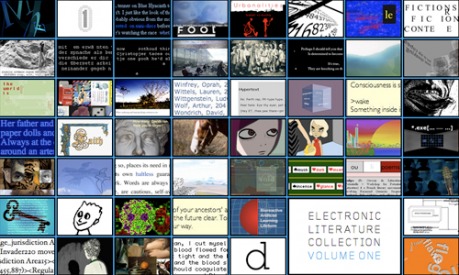Electronic Literature
Electronic literature consists of text which can be read in a variety of ways, depending on the reader. Hyperlinks throughout the text (known as nodes) allow readers to choose which paths to take within a story. Different readers may take different paths, which can change the readers' impressions of the story or journey. Nodes are what make electronic literature, or hypertext fiction, different from other websites because they do not follow a pre-determined order. ("What").
Electronic literature is "a form of cultural and artistic production on the Internet with important literary aspects that take advantage of the contexts provided by the stand-alone or networked computer" (Rettberg). One of the most common characteristics of web-based literature is that it can often be read, viewed, and listened to in different ways according to the navigation of the reader (Rettberg).
The early works of electronic literature were typically blocks of text with few graphics, colors, and sounds. Now, the works make more use of the of the Internet. Even though the hypertext link is considered the prominent feature of the earlier works, recent works use a variety of navigation tactics that de-emphasize the link (Hayles). For example, sometimes links will be plants, arrows, buildings, etc., so as to make the site more complex, innovative, and artistic.
Electronic literature has expanded into different types of digital media. One type is Interactive Fiction (IF). Interactive fiction is usually presented as a video game, a novel, or a combination of the two. Interactive fiction expands the range of the literature through different techniques including graphics, animations, and reformations of traditional literary devices (Hayles).
In Fall, 2006, the Electronic Literature Organization released the Electronic Literature Collection Volume 1. It includes sixty works in digital media forms such as hypertext fiction, interactive fiction, kinetic poetry, network writing, 3D, and narrative animations.


